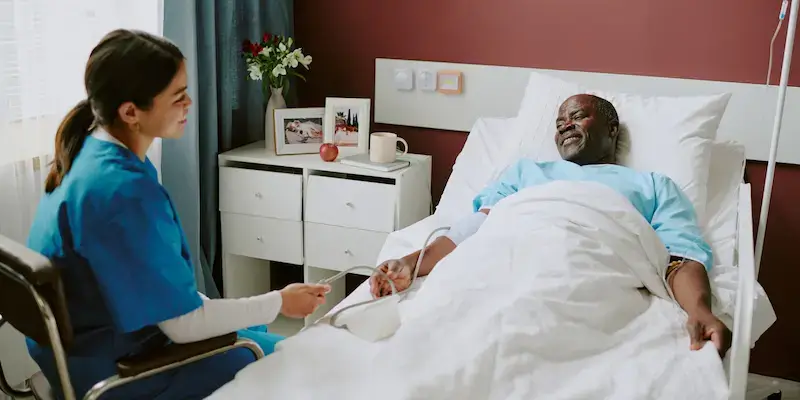Home >
Foot and ankle open reduction and internal fixation surgery
Get rapid access to our leading specialists.
Foot and ankle open reduction and internal fixation surgery, also called ORIF surgery is a surgical procedure to fix multiple or badly broken bones in the foot or ankle.
Learn more about foot and ankle open reduction and internal fixation surgery at King Edward VII’s Hospital
Why would I need foot and ankle open reduction and internal fixation surgery?
Your doctor or surgeon will advise that you have ORIF surgery if they think your foot or ankle is broken so severely that it won’t repair naturally by just being in a plaster cast or surgical boot. In this case, ORIF surgery is your best chance of recovering normal movement.
What symptoms does foot and ankle open reduction and internal fixation surgery address?
Foot and ankle open reduction and internal fixation surgery is used to fix severely broken, shattered bones or multiple broken bones. It’s also used when bones have moved position or have pierced through the skin. Surgeons use surgical pins, plates, rods or screws to hold the bones together and in place.
When should you speak to your specialist about foot and ankle open reduction and internal fixation surgery?
Since this type of surgery is usually carried out urgently, your GP is unlikely to be your first port of call. It’s more likely that foot and ankle open reduction and internal fixation surgery is recommended in an Accident and Emergency department.
How is foot and ankle open reduction and internal fixation surgery performed?
Foot and ankle open reduction and internal fixation surgery is performed under a general anaesthetic in two parts.
During the first part, called open reduction, your surgeon will make a surgical incision in the skin covering your broken bone(s). They will then physically manoeuvre the bones back into place.
Then during the second part, called internal fixation, they will use surgical pins, plates, rods or screws to hold the bones together or in place. They may use x rays throughout to make sure the bones are properly in place.
How long surgery takes will depend on the severity of your broken bone(s).
What is the recovery like for foot and ankle open reduction and internal fixation surgery?
Your recovery from foot and ankle open reduction and internal fixation surgery will depend on multiple factors, including your age, fitness level and the nature of your procedure.
How long you might have to spend in hospital and how long it might take you to recover will also depend on the severity of your broken foot or ankle bone(s).
Your surgical, nursing and physiotherapy teams will give you full advice on how best to recover, including how long to use crutches or a walking frame for, when you can be weightbearing on your foot and when and how to begin rehabilitation exercises.
You may also have a series of x rays and MRI scans to assess how well your foot or ankle is healing.
Are there any risks/complications associated with foot and ankle open reduction and internal fixation surgery?
As with any medical procedure, it’s possible for risks or complications to arise. Speaking with your specialist or surgeon beforehand will help you avoid any adverse reactions.
Foot and ankle open reduction and internal fixation surgery has a relatively low risk of serious complications, but the following risks and complications can occur in a small number of cases:
- Infection
- Bleeding
- Blood clots
- Stiffness or numbness
- Damage to the nerves, blood vessels, tendons or ligaments
- Loss of mobility
- Bones and metalwork moving out of place
How can I prepare for foot and ankle open reduction and internal fixation surgery?
Foot and ankle ORIF surgery usually needs to be performed without delay. Therefore, the usual advice for preparing for surgery such as losing weight, exercising and quitting smoking isn’t relevant.
Are there alternatives for foot and ankle open reduction and internal fixation surgery?
As foot and ankle open reduction and internal fixation surgery is carried out as an urgent procedure, it’s usually advised that a severely broken bone isn’t left without surgery. Less severely broken foot and ankle bones can be treated with immobilisation using a plaster cast or surgical boot followed by physiotherapy if necessary.
Call 020 3504 4605 or fill in your details below to make an enquiry
Need further help or advice?
Contact our team for enquiries or information.
If you need to contact us in any other way, please go to

